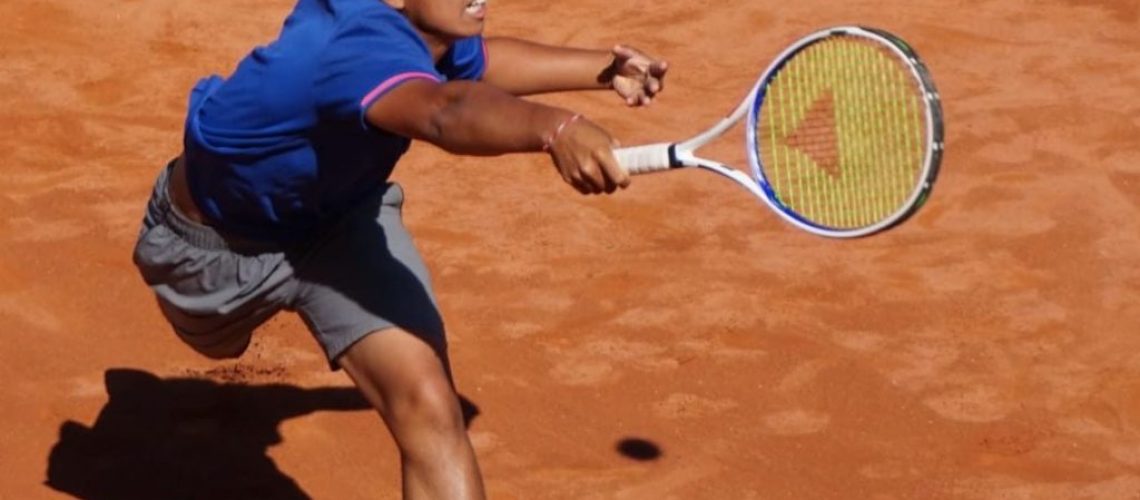You will have one or more adversaries, the ones that give you headaches; and among them, there may be some that tend to play a defensive game. This is one of the styles that you will find on the court; and especially if you don’t like to play against a defensive player, since an intelligent opponent will choose those tools that annoy you the most. Therefore, today we are going to talk about how to face a defensive player and we will see the different ways to neutralize his game.
There may be differences between players who use defense as a weapon. The typical “puncher” is the one that is always at the baseline and returns everything; doesn’t have a high rhythm, doesn’t open the court, doesn’t change the game, but makes you suffer a lot. You can also meet players who use this strategy, since they see that it affects you and they earn points with it, but they can also dominate other areas of the court; They are players with a more varied style and can “stay back” at some points, but suddenly they will go up to the net, attack you or break your rhythm. Today we are going to talk about the first and the guidelines that must be followed to counteract their ultra-defensive game and solve those situations in your favor.
The defensive player
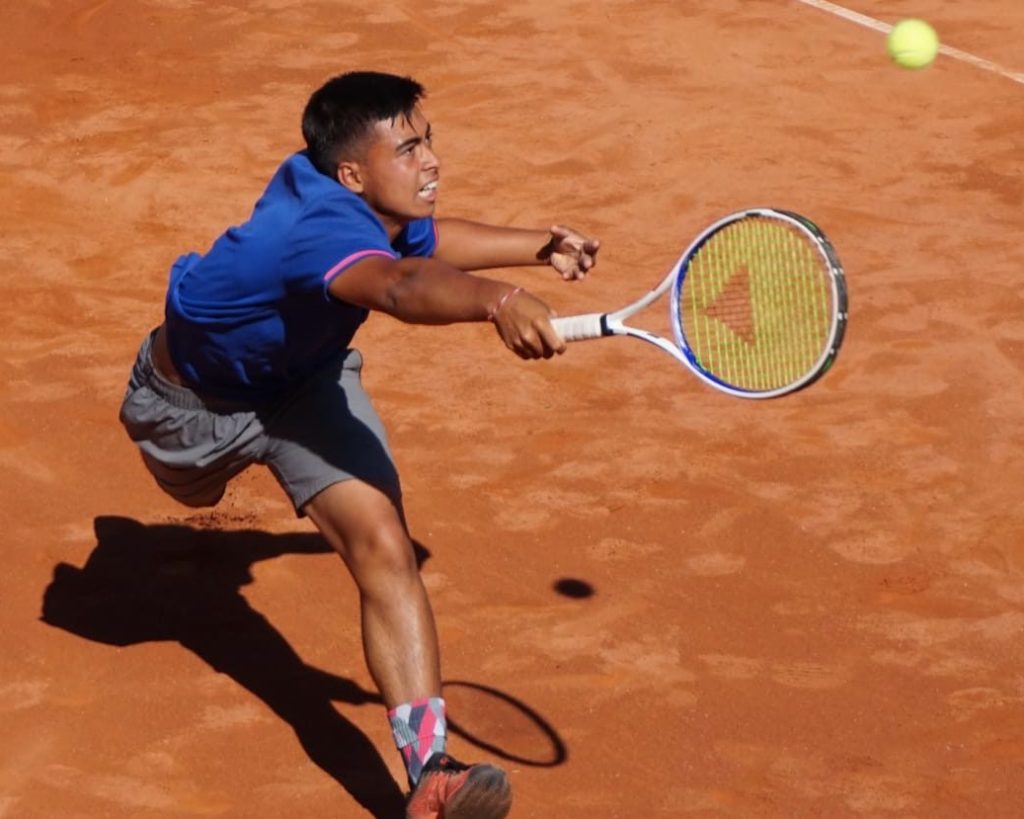
The typical “counter-puncher” runs for all the balls and passes them to your side of the court. He never gets tired. He could stay there, pushing balls, all day. At higher levels, they can have more spin on on ball, more placement, more depth, and better definition in points; but the essence of his game plan will remain the same: return everything.
Those high balls that seem to come flying forever hypnotize you. You stay there, you don’t see holes in the court, you start hitting from the fence looking for winners and this generates anxiety. The opponent keeps pushing the ball up again and again. It seems like he is testing your patience. That kind of game can be very effective against someone who can’t handle it: it drives you crazy and makes you dizzy on the court.
And you will ask yourself: “What do I do against it?”
Patience will be your best ally
Patience is your best friend. Against those balls that keep coming back, against that game that is heavy, repetitive and slow, that happens in the same way over and over again, not losing the reins is the best thing you can do. Punchers are a human wall: they will run longer than you, they will last longer than you and, if you allow it, your head will start to go away.
Mentalize yourself to play long rallies: Mental preparation beforehand is essential, since the defensive player style the first thing that attacks is your head. You have to go out on the court aware that each rally is going to last a long time. You will have to hit many more balls than usual; And when you think you have made a winner, the ball will keep coming back high, deep and you will have to start all over again.
Defensive players have a lot of continuity and patience. Continuity is one of their best weapons; and it’s hard to beat them at their own game. Even at professional levels, where (sometimes) points are won with direct shots, the percentage of errors is what decides the course of the matches. If you put more balls in the court, you win; And this is what a defensive player does: not miss. Unforced errors determine the result more than spectacular shots: that is the key to the defense game… and against it too.
Defensive play can be consistent, but it’s still limited. If you are patient and know how to take advantage of this type of game, you can overthrow it.
A defensive player beats you because you choose a wrong game plan: as more and more balls come back you start to get frustrated; you lose patience; you seize up and put too much effort into each shot; you try to hit harder, deeper, more angled, and in the end, you hit unthinkable shots for your level. But your opponent keeps getting everything back until you make the mistake; or you may get into his game, which will also lead to almost certain defeat.
That’s why you have to prepare yourself well mentally, find all the patience you can look for and get used to the idea of facing very long rallies.

Don't play the match before the match
One of the effects that these types of players can produce on you is mental defeat you before the game: they begin to weigh from the moment you see them in the draw (just like the seeded players, players in bold). You start to think of the game as an insurmountable uphill; you imagine those balls that come and go… and in the end you stop seeing holes or possibilities to win the points. The image of endless rallies starts to weigh on you and you start to give up before playing the first point.
That is why you must prepare a solution plan: see the plays and strategies that can work against this type of player; visualize these plays and repeat them in your mind. This will help you release the pre-match pressure and give you images of how you can earn points. Mentally, the match will no longer be a burden and an unsolvable problem; You will also be clear about the plan to follow in different circumstances of the game.
Take a defensive player out of his comfort zone
Go up to volley
What you have to do with a “retriever” is to force him to a game other than his, to try to hit a passing, to throw you a lob, to hit with less time, to decide on more precise shots. If you stay at the baseline, you give him all the leeway so as not to fail and there he will feel very comfortable. Narrow his goals – you’ll see how he will start to rush and get nervous.
When you go up to volley you force him to seek more precision in his strokes so as not to leave the ball easy on the net; you force him to play by placing the ball closer to the lines, hitting with less margin over the net, and that is what he does not like to do. The defensive player does not usually rush shots; he usually plays 1.5 meters away from the lines and over the net; The moment you force him to hit more accurately, he will start to miss more.
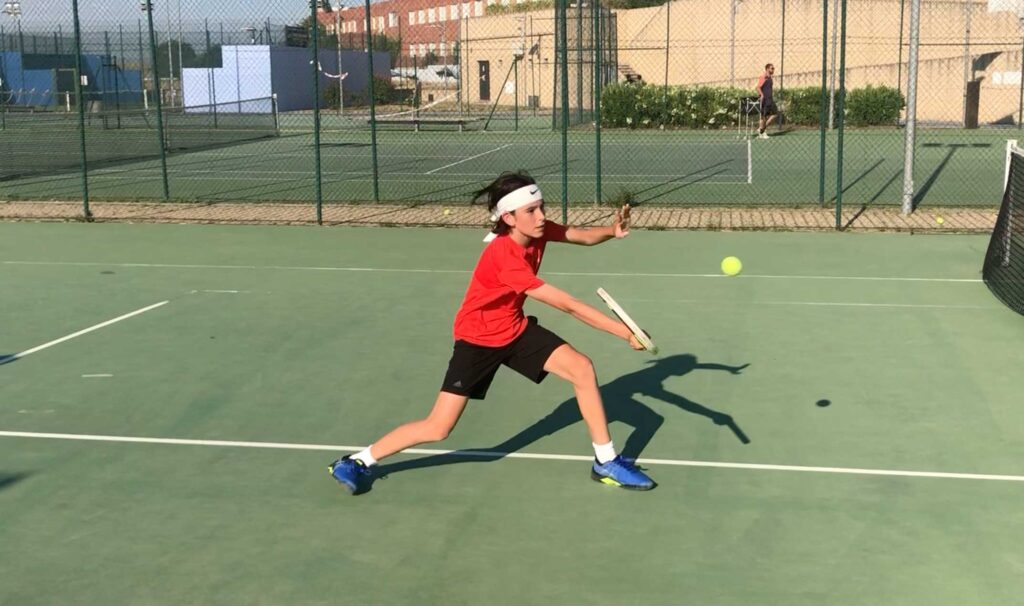
Another objective that you are going to achieve by going up to volley is to shorten his times: his game is based on shots with margin and slow tempo between them. When going up to volley, in addition to closing the court, you force him to play in a faster tempo: the ball returns earlier, the rhythm accelerates and he also has to look for a precision shot. Trust me, that’s not what he would like to face.
Nor do I mean that you should go up to the net at every point, or push the ball and go up in any way: choose the moments well and, once you have a chance, take advantage of it. Don’t let him put you to sleep with his monotonous rhythm on the court: break the rhythm and turn the game around.
Force him to go up to volley
In case your volley is not the best of your shots and you do not have the confidence to go up to the net, or if doing so your opponent hits lobs and you find yourself insecure with the overheads, do not abuse it. Instead, force your opponent to go up and check how he unfolds at the net: let him show you how he makes an approach, a volley, a lob (better if the sun is facing him). Get him out of his place of comfort and he’ll be easy prey.
Use drop shots, short balls to force him up, but don’t try to make them too risky, looking for winners. Play with margin and force him out of his confidence zone. Most of the time you will see that at the net the confidence of a defensive player drops a lot: you will see him doubt and be lost; and this, in addition to allowing you to earn more points, will position you in a mental space of advantage.
Hit the ball with less power
The defensive baseliner takes advantage of your power to block the ball: the harder you hit, the harder he will return it to you; and the one who gets tired is you. Also, by speeding up you start to make more mistakes, and that is what your opponent wants. So save energy and, from the back of the court, open up angles with low-tempo hits. Make your opponent work more, print more force in his shots, force him to try to attack, invite him to look for a winning shot, but when you have a clear shot, a short ball, do not hesitate: enter with confidence.
You need to control the energy expenditure per point, so save your strength for those balls that stay in the middle of the court, in the pressure or attack areas and do not leave your opponent the possibility of wearing you down to then play with you. Hit the ball with less power from the baseline and wait for a better moment to attack.
Work with the Zones of the Court
Along with all the above, you must be clear about “The Zones of the Court”: in the defense and control zones you must match the game of percentages. Don’t rush and don’t be in a hurry to finish the points from behind the baseline. Move the ball with safe patterns and wait for the moment to gain ground on the court. Stay awake to take advantage of the short balls and, once inside the court, take the initiative. Remember that you must control both margins (risk) and energy expenditure (power) to equalize the game in neutral areas and, when you see the opportunity, play in areas of greater aggressiveness.
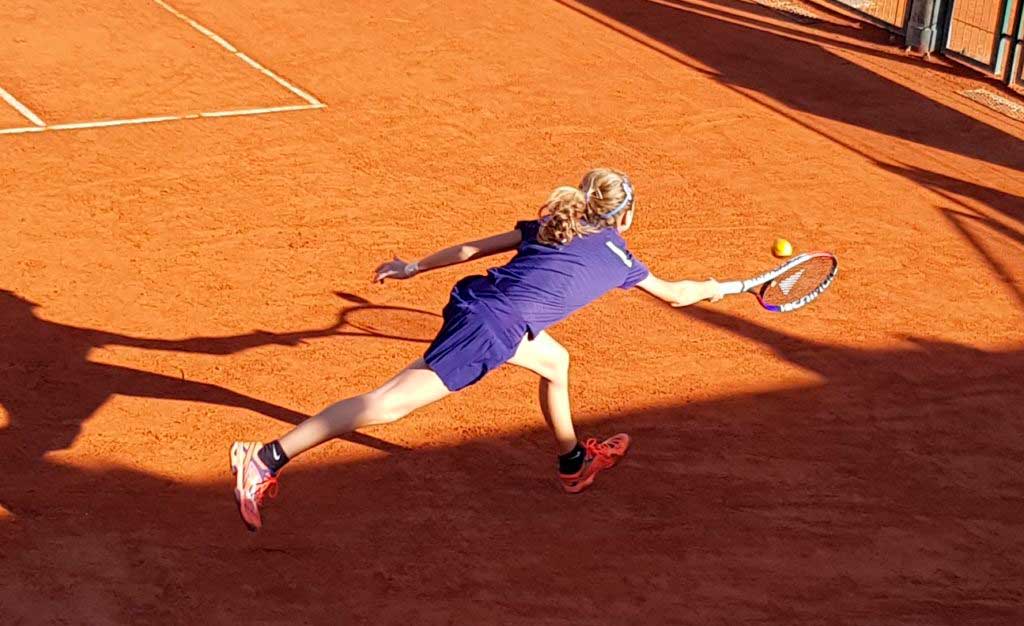
Slice against a defensive player
The slice can help a lot to break the monotony of the rally when it’s getting too long. The change in height and/or the spin can make the groundstrokes uncomfortable and cause your opponent to play shorter. You can also camouflage well the slice with drop-shot and move the opposite back and forth on the court. If you have this weapon, feel free to use it against the defensive player; But you must bear in mind that if the opponent plays deep, with high topspin over the height of your shoulder, it may be a bit difficult to use the slice and you must wait for a better moment to carry it out.
Use more variety in the serve
Use short serving patterns if you have them well worked out. By starting the point you could build faster plays; but if this is not the case or if the opponent defends well, do not forget to go back to what was said before: patience, and look for a ball inside the court to be aggressive.
You can also hit a second serve instead of a first from time to time, alternate effects, or serve without power to force him to attack. Don’t try to win the game with just aces if you see that it doesn’t work. Force him to generate his own strength, to get into the ball, since this is not his game: he will begin to miss and accelerate; And if he pushes the ball and it falls short, be ready, waiting to get in and take the opportunity to go up to the net.
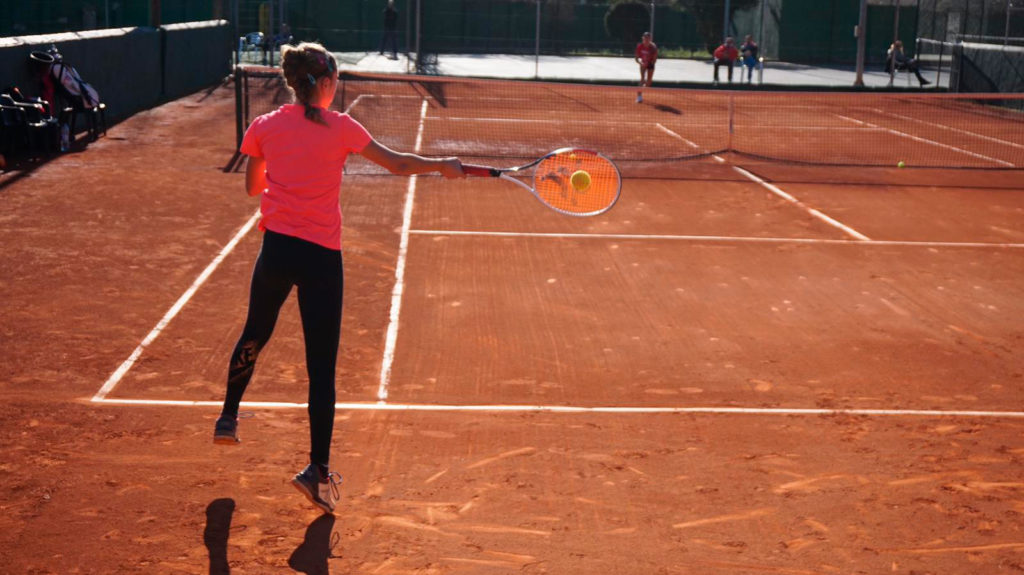
Put pressure from the return
A defensive player does not normally have a good serve to easily win points. He’s not going to get a lot of aces out of it and he’s not going to create short plays by attacking, either – if he did, he wouldn’t be a defensive player anymore. Mostly, he will place an uncomfortable serve to start a long rally and this can be used to try to subtract more aggressively. If you trust your rest, you must position yourself closer and try to take initiative from the first blow; This will also force him to seek more damage with his serve and, if he rushes, you will make the first serve miss more and start the points with more seconds.
Overflow a retriever with power
This would be quite a risky choice and would work only if the power level you can consistently maintain is much higher than what the defensive player is used to, but one thing is certain: a slight power surge can make any player commit errors, including the typical defensive baseliner. You must be aware of the risks you are taking and the percentage you can maintain by increasing the pace of the ball, as well as observe if this makes your opponent uncomfortable. Shortening the tempo between shots can create difficulties for him and lead to mistakes; but the defensive player will always have the opportunity to go further back to win that extra time and you, in those moments, must have the facility to close the points at the net.
As I say, it is a risky style, but if you’ve got it mastered and you see that you’re doing damage with it, be brave, find your shots, and watch the game unfold.
A trick against a defensive player
Have you ever tried to put more balls than the “puncher”? Well, I tell you one thing: if you get it during several points and if you make him see that in the end, he ends up making an error, you will get him to change his strategy, which can be good for you. You will get him to start being more aggressive, thus entering your game; but remember that those first “pulse” points are going to be endless. You must force him to miss, beat him on his own ground; and if you have the patience and the tools to do it, you will see how, little by little, the one who never hit begins to look for alternative options.
Master the tempo of the match
And finally, try to observe the tempo between points. In case you are doing errors, don’t rush, take your time, go to the towel, control the timing. And if you have taken the initiative and you are winning the points, keep the rhythm, keep that tempo, without accelerating but imposing the pace of the game. Remember that the defensive player will not be overwhelmed if the game is prolonged, but it will annoy him to lose the points while the tempo is shortened.
Another thing is to seek to alternate the tempo between points, to break the monotonous rhythm of the game, sometimes looking for a longer rest and starting the point faster on other occasions. These alternating rhythms will affect his game and can take him out of his comfort zone both on the shot level and mentally.
With all this, the next time you play against a “retriever”, try to extrapolate something from this article to the court. It will take some time to get used to these changes, so develop an intuition of what you have to do in each moment and what works best for you. You will feel more comfortable having many options, weapons, and strategies to use on the tennis court.
And use them without fear!; but with intelligence.



